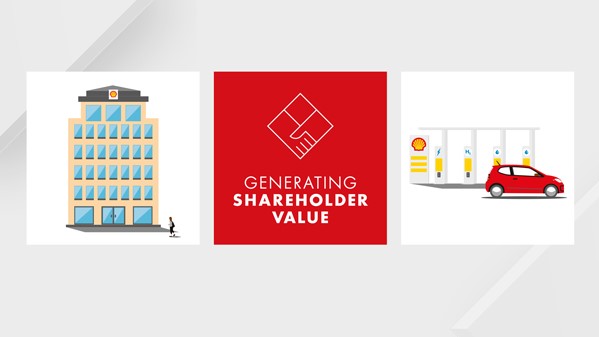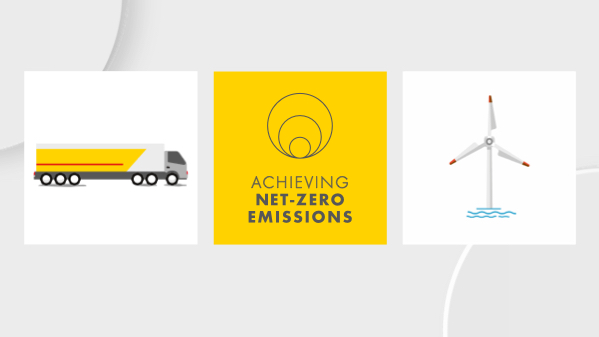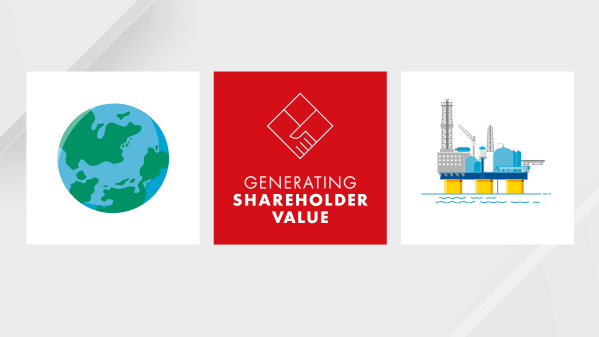Climate standards and benchmarks
Shell welcomes the recommendations of the Task Force on Climate-related Financial Disclosures (TCFD). The TCFD is a global initiative to get companies across all sectors to assess climate-related risks and opportunities. It recommends that companies disclose information in four areas: governance, strategy, risk management, metrics and targets. This table shows where to find Shell disclosures that are related to recommendations by the TCFD in Shell’s Annual Report.
TCFD Recommendation |
Shell disclosure |
|---|---|
Governance: |
|
a) Describe the Board’s oversight of climate-related risks and opportunities. |
Annual Report: |
b) Describe management’s role in assessing and managing climate-related risks and opportunities. |
Annual Report: |
Strategy: |
|
a) Describe the climate-related risks and opportunities the organisation has identified over the short, medium, and long term. |
Annual Report: |
b) Describe the impact of climate-related risks and opportunities on the organisation’s businesses, strategy, and financial planning. |
Annual Report: |
c) Describe the resilience of the organisation’s strategy, taking into consideration different climate-related scenarios, including a 2°C or lower scenario. |
Annual Report: |
Risk management: |
|
a) Describe the organisation’s processes for identifying and assessing climate-related risks. |
Annual Report: |
b) Describe the organisation’s processes for managing climate-related risks. |
Annual Report: |
c) Describe how processes for identifying, assessing, and managing climate-related risks are integrated into the organisation’s overall risk management. |
Annual Report: |
Metrics and targets: |
|
a) Disclose the metrics used by the organisation to assess climate-related risks and opportunities in line with its strategy and risk management process. |
Annual Report: |
b) Disclose Scope 1, Scope 2, and, if appropriate, Scope 3 greenhouse gas (GHG) emissions, and the related risks. |
Annual Report: |
c) Describe the targets used by the organisation to manage climate-related risks and opportunities and performance against targets. |
Annual Report: |
Since the publication of Shell’s Energy Transition Strategy in 2021, Shell has continued to engage with the Climate Action 100+ investor group. The table below shows how Shell was assessed in the March 2022 Climate Action 100+ Net Zero Company Benchmark.
Criteria |
Assessment of Shell’s plans |
||||
|---|---|---|---|---|---|
Net zero by 2050 |
Meets all criteria |
||||
Long-term greenhouse gas reduction target |
Partial, meets some criteria |
||||
Medium-term greenhouse gas reduction target |
Partial, meets some criteria |
||||
Short-term greenhouse gas reduction target |
Partial, meets some criteria |
||||
Decarbonisation strategy |
Partial, meets some criteria |
||||
Capital allocation alignment |
Does not meet any criteria |
||||
Climate policy engagement |
Meets all criteria |
||||
Climate governance |
Meets all criteria |
||||
Just transition |
n/a |
||||
TCFD disclosure |
Partial, meets some criteria |
||||
|
|||||
The Climate Action 100+ benchmark uses assessments by the Transition Pathway Initiative (TPI). In its assessment, TPI highlights that it has recalculated Shell’s net carbon intensity according to its own methodology. It also highlights that Shell has set further targets to reduce its net carbon intensity, but they were not included in this assessment as it was not possible to make them consistent with TPI’s methodology.
We were disappointed with this outcome as we had engaged with CA100+ and TPI to understand the differences in the methodologies used. We had clarified our 2035 and 2050 targets on that basis. However, we will continue our engagement with CA100+ and TPI with the aim of ensuring that our current targets are reflected in the next Climate Action 100+ Net Zero Company Benchmark. We believe that this could result in a change to the Shell assessment to 'meets all criteria' for at least five indicators, 'partial, meets some criteria' for three indicators and one 'does not meet any criteria' rating for capital allocation.
As described in this report, we continue to believe that total expenditure, as measured by cash capital expenditure and operating expenses, rather than capital expenditure alone, is the best way to measure the scale of our financial investment in the energy transition.









